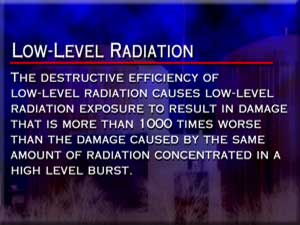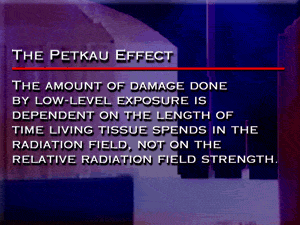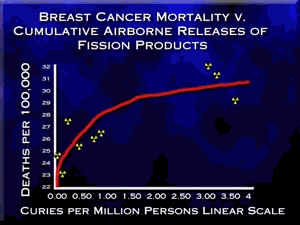|
Dr. Abram Petkau, a Canadian scientist,
found that due to this efficiency, the amount of damage done by low-level
exposure is dependent on the length of time living tissue spends in the
radiation field, not on the relative radiation field strength. |
 |
|
As internal radiation pulses never stop,
damage is continuous. There is no chance to heal. |
 |
 |
The destructive efficiency of continuous internal
low-level exposure may explain why women living near nuclear plants experience
elevated breast cancer mortality. Dr. Gould, a statistician and Director
of the Radiation and Public Health Project, and Dr. Sternglass, Professor
Emeritus of Radiology at the University of Pittsburgh Medical School, examined
National Cancer Institute data. |
 |
They found, for example, that the rate of breast cancer
in those counties within 100 miles of a nuclear plant was 16% higher than
the rate in other counties. This translates to over 17,000 excess deaths
from breast cancer in the years 1985 to 1989. |

|


|



























